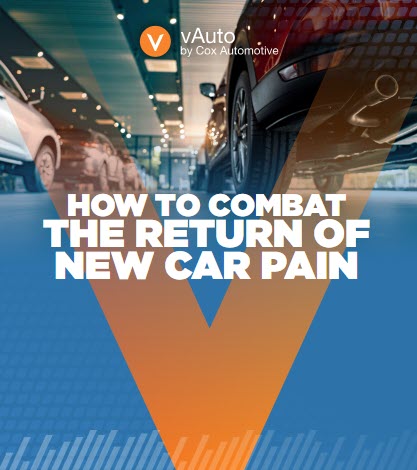For Car Dealers, It's No Longer a Race to the Bottom. It's a Race for Inventory.
Oh, how times have changed. It wasn’t long ago when new car dealers would say, “I don’t make any money selling new cars; I just give them away.”
The harsh reality of this business has always been that the automakers set and control the rules of the game. And VOLUME has always been the name of their game.
Since 2015, the new car business has been on quite a roll, with 17 million unit sales becoming the new normal. And you can’t blame the automakers. They all wanted to grow their share of the pie and pulled every lever possible to maximize their volume: increasing production levels, aggressive incentives for both consumers and dealers, and billions of dollars spent on advertising.
For most brands, there was plenty of inventory pressure in addition to competitive online pricing pressure. Dealers had no choice but to be aggressive. This exact set of circumstances contributed to the steady decline of new car grosses.
In 2012, NADA reported the average gross percent of selling price on new cars was 7.1%. But over the years, the gross margin has dropped to 5.5% in 2019. NADA’s calculation includes F&I income, which is estimated to be more than 70% of the front-end gross. On most new vehicles, true front-end gross was $500 or less.
In March 2020, the COVID-19 pandemic flipped everything we knew about the new car business. Factories stopped and the industry lost nearly 3 million units of production. Dealer inventories are now down 1.3 million units from February; days supply has fallen from 90 days in late February to 55 in late September, according to vAuto Available Inventory data. In some segments, incentives have been cut by more than 20%. The automakers have punted or lowered the payouts on their volume-based programs.
I spoke with a Chrysler-Dodge-Jeep dealer in New York who told me he sold 111 new vehicles in August, despite starting the month with 51 on the ground. That’s an 85% sell-through rate. And if that’s not impressive enough, he also told me his front-end gross (not including F&I) was up $1,400 per vehicle from a year ago.
Another dealer recently told me that, in his market, dealers are paying full MSRP to acquire new car inventory from other dealers. Wait, what? This is insane!
For the first time in memory, the automakers didn’t change the rules of the game. The pandemic did.
The competition in the marketplace is no longer about who has the lowest advertised price. The competition among dealers is now about who has the most efficient new car inventory because, “He who turns the most, earns the most.”
vAuto data shows that the competition for inventory among some brands is fierce. At Lexus, top-performing dealers are running an average of 18 days in stock. GMC: 25 days, Jeep: 37 days, and Toyota: 42 days.
This is the degree to which dealers must turn inventory to continue earning healthy allocations from their automakers. Dealers who think they’re doing well with average days-on-lot of 60 are getting their inventory lunch eaten by more efficient inventory operators.
This highly competitive new race for inventory is likely to continue for the foreseeable future, as wholesale shipments to dealers in August and September only reached 83% of the expected norm for this time of year.
It will be interesting to see what the COVID-19 legacy is for the new car business, for everyone involved — automakers, dealers and consumers.
- Will automakers realize that overproducing with big incentives is not the optimal approach?
- Will dealers realize they can maintain comparable sales volumes and higher grosses, with fewer units on the ground — if they pay closer attention to their inventory?
- Will consumers learn that waiting until the last day of the month might not be the best way to get the exact vehicle they want?
In the meantime, one thing is certain: The race for inventory is on!








